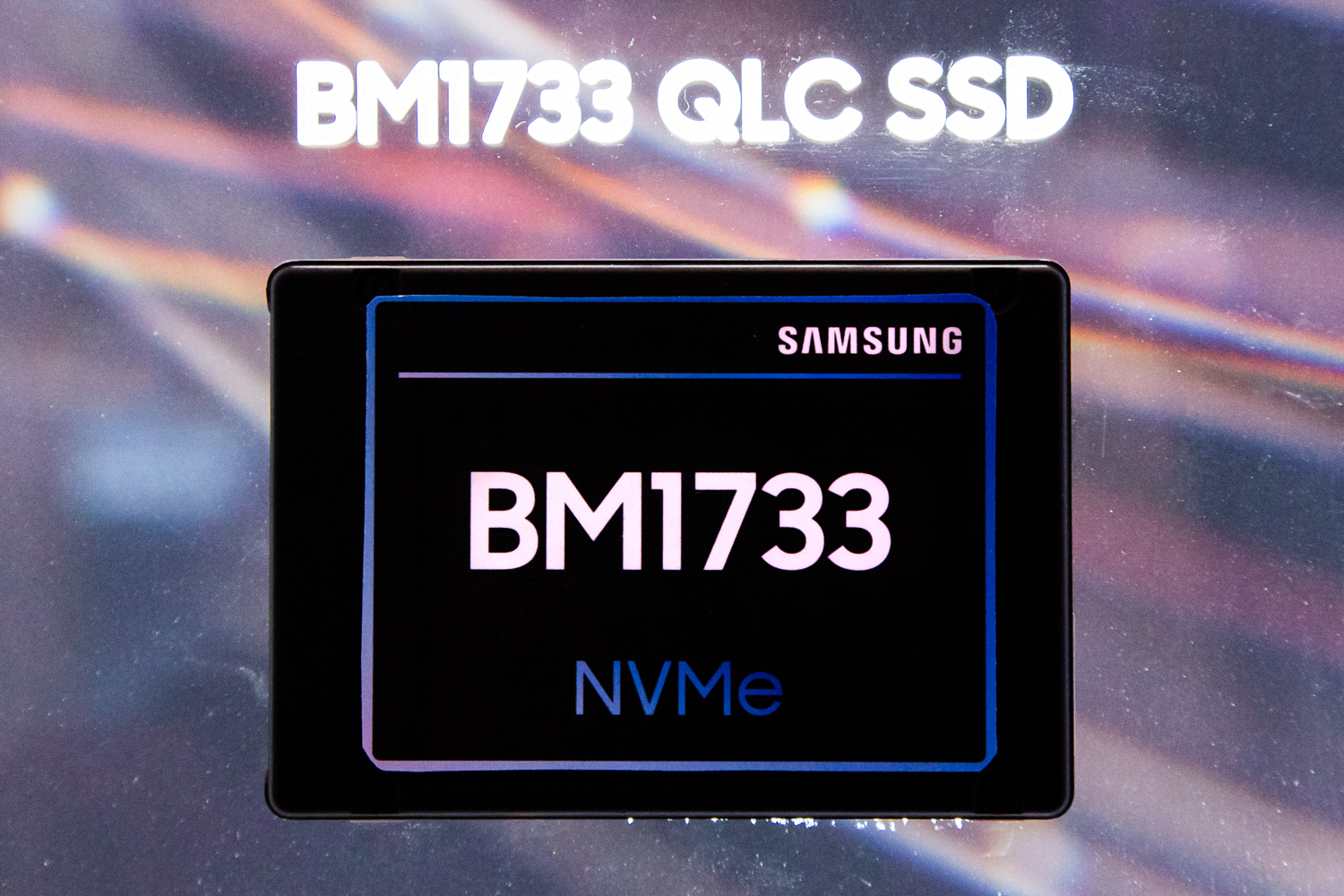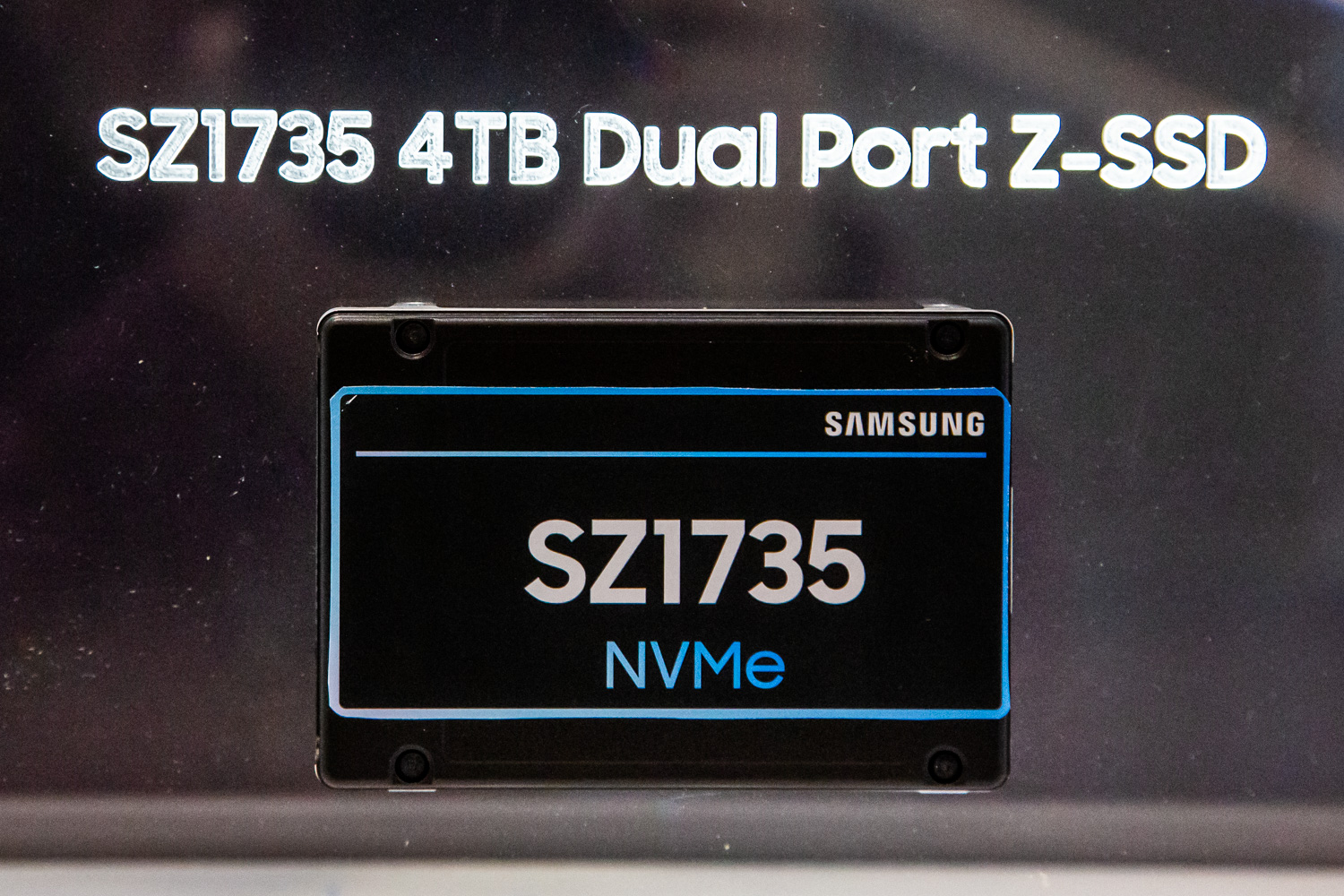Samsung Announces QLC SSDs And Second-Gen Z-NAND
Samsung made a few important announcements about its memory and storage products at its Samsung Tech Day event. The face of data storage is changing rapidly as new denser and cheaper forms of flash worm their way to market. Samsung led the industry to the first SSDs powered by 3D NAND, affording it an advantage that it turned into a multi-year leadership position in the storage market. Interestingly, the company has lagged competitors on the QLC front, with both Intel and Micron already shipping QLC SSDs into several market segments. But Samsung will soon bring its own QLC products to market under a new line of QVO-branded SSDs.
QLC SSDs, V-NAND V5, V6, and Beyond
Samsung has been on a steady march to increase the density of its 3D V-NAND that debuted five years ago. Samsung's previous-gen V4 flash landed at 64 layers, but now the company plans to step up to ~90 layers with V5.
| Samsung V-NAND | V1 | V2 | V3 | V4 | V5 |
| Layers | 24 | 32 | 48 | 64 | 9x |
| Die Density | Row 2 - Cell 1 | Row 2 - Cell 2 | Row 2 - Cell 3 | Row 2 - Cell 4 | 1Tb |
V5 brings another important improvement beyond just the obvious increase in layers: The company is producing its newest flash in both TLC and QLC flavors. V5 QLC will come in a 1Tb die that is 33% denser than TLC. Samsung is also spinning a higher-performance 512Gb density die that it says will be faster than competing QLC flash. Samsung claims the new high-performance variant boasts 37% faster read latency and 45% faster write latency than competing flash. The 1Tb die is also plenty fast – it operates at 1.4Gbps, which is nearly twice as fast as other flash that operates in the 800Mbps range.
String Stacking, also known as multi-stack, has become the most commonly used technique to boost 3D flash layer counts. This manufacturing process essentially consists of multiple 'stacks' of 32-layer flash layered atop one another. All of Samsung's competitors use string stacking, which adds cost and complexity to the manufacturing process, but Samsung is sticking to single-stack flash for the V5 generation. Samsung claims this will reduce costs by boosting production quality and yields.
Samsung also announced that is working on V6 flash and has plans for further improvements in successive generations. V6 will debut at <100 layers, but like V5, Samsung isn't sharing the exact layer count. The company did say it will use string stacking with the next-gen flash.
Samsung also has plans for V7-10 and beyond, which it says will eventually expand to 500 or more layers over the next ten years. Samsung has cooked up a few new technologies to further its goals. This includes Cell Over Peripheral, which is similar to Intel and Micron's CuA (CMOS Under the Array), and shrinking the cells laterally. Samsung will also string stack multiple V-NAND stacks when single stack technology ceases to scale effectively.
Get Tom's Hardware's best news and in-depth reviews, straight to your inbox.
Samsung will refresh its current products with the new V5 TLC flash and develop new V5 QLC-based SSDs for enterprise and data centers. Those drives are designed to replace 10K HDDs that are used for warm data storage applications.
Samsung will also introduce the 970 EVO Plus with V5 TLC NAND. The new Samsung EVO Plus will still come in capacities up to 2TB, but Samsung has boosted throughput to a beastly 3 GB/s, a 500 MB/s increase.
Samsung also announced a new 860 QVO SATA SSD, 980 QVO NVMe SSD, and a BM991 NVMe SSD. The new 860 QVO and 980 QVO may be next-gen retail products, like the 860 and 970 EVO, but Samsung is being coy with the details.
The QLC lineup includes six new SSDs. Features like Extreme ECC and V-NAND State Stabilizer will help maintain data integrity and provide "machine learning-based data protection," proving some buzzwords transcend all boundaries. Three of the new drives are enterprise/datacenter oriented. The BM1733 and BM9A3 use the NVMe interface, and the BM1653 connects via SAS.
The BM1733 will come in an NF1 form factor for data center use and U.2 for enterprise with dual port connectivity. The BM1733 will also support capacities up to 32TB and speeds of up to 10GB/s through a dual-port PCIe Gen4 interface.
Samsung added the PM1733 to their lineup, superseding the PM1723b. The PM1733 boasts capacities that range from 1.6TB up to 30.72TB. The SSD leverages an upgraded dual-port PCIe Gen4 interface to push up to 8/3.8GB/s of sequential read/write throughput and up to 1.5 million random read IOPS and 250,000 random write IOPS.
Z-NAND Gen2
Samsung designed Z-NAND to be a cheaper alternative to Intel’s Optane. Instead of starting from a blank drawing board, the company simply modified existing SLC flash by shrinking the wordlines and bitlines. The first gen Z-NAND die featured a 64Gb density and read/program latency of 3us/100us.
Samsung’s second-gen Z-NAND now comes in both SLC and MLC flavors. The SLC variant boasts double the density of their first gen, at 128Gb, and improved read/write latency of <1-3/70us. The new MLC variant doubles density to 256Gb and boasts read/program speeds of 5/150us, which represents a performance trade-off for much more capacity. Samsung is expanding its Hwaseong fab to boost production.
Second-gen Z-SSDs come in capacities ranging from 800GB up to 4TB. The SZ1733 and SZ1735 slot in as the SLC models and unnamed MLC Z-NAND products will follow later.
The SZ1735 is rated for up to 30 drive writes per day throughout its five-year warranty. It has 4K read latencies of ~16us, delivers up to 3GB/s of sequential throughput and 750K/250K random read/write IOPS. Future Z-NAND-based SSDs should follow with performance of up to 12GB/s via the PCIe Gen4 interface.

Sean is a Contributing Editor at Tom’s Hardware US, covering storage hardware.
-
remosito slightly confused about PM1733 and BM1733 in that articleReply
- First you talk about new QLC ones including BM1733.
- Then you talk about updated PM1733 replacing the PM1723b
- Then you go back to talking about BM1733 form factors, speed
Moving that third paragraph into second place would really help... -
karenjoly The article is confusing in its discussion of the "Plus" drive.Reply
The article says
Samsung will also refresh the 970 EVO Plus with V5 TLC NAND.
Refresh ? How can there be refresh of a drive we have never heard of ?




